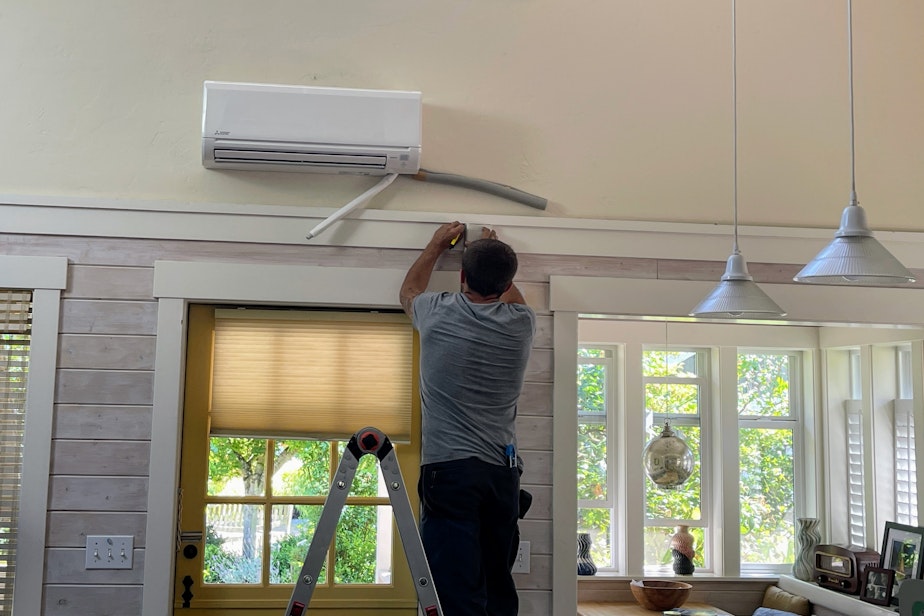Washington state phases out super-polluting gases used in refrigerators, air conditioners

You’ve probably never seen or smelled a hydrofluorocarbon, but these synthetic gases are inside the air conditioners, refrigerators, and heat pumps in most Washington homes and businesses.
Washington state is phasing out these super-pollutants, known as HFCs.
HFCs can be hundreds or thousands of times worse for the climate than carbon dioxide, the main pollutant overheating the planet. Pound for pound, the most common refrigerant in home-cooling appliances, known as R-410a, traps 2,000 times more heat than carbon dioxide does.
HFCs are a small part of the human threat to the climate at the moment now—about 3% of the United States’ annual greenhouse gas emissions in 2021, according to the Environmental Protection Agency, and 4% of Washington state’s emissions, according to the Washington Department of Ecology.
But they are the fastest-growing source of climate damage.
Starting Jan. 1, it will be illegal to sell or install air conditioners, heat pumps, and dehumidifiers for residential use in Washington if they contain the worst of these super-pollutants — those at least 750 times more potent than carbon dioxide. In 2025, HFCs more than 150 times more potent than carbon dioxide will be banned from many commercial uses.
Sponsored
Existing equipment and retail inventory aren’t covered, but big users like supermarkets, hospitals, and seafood plants have to register their HFC use and take action to prevent leaks.
“The goal here really is to allow those systems to continue operating through their natural lifespan, because they are obviously significant investments for a business, but doing so in a way that is minimizing the amount of refrigerant that's leaking out of them,” said Leonard Machut with the Washington Department of Ecology.
Newer HFC coolants already on the market — and widely adopted in motor-vehicle air conditioners — do about two-thirds less climate damage than the ones being banned.
The vast majority of climate impact from cooling devices comes from the electricity they use.
“You should not be sacrificing efficiency for these refrigerants,” said engineer Curtis Harrington with the Western Cooling Efficiency Center at the University of California, Davis.
Sponsored
Harrington said the lower-impact refrigerants, which have been coming on the market in California in the wake of that state’s HFC regulations, have about the same energy efficiency as the HFCs they’re replacing and that consumers wouldn't notice a difference in performance.
The cost of some household cooling appliances could go up about $30, according to the Ecology department.
Harrington said HFCs with lower global-warming impacts are merely transitional solutions and are themselves likely to be banned by the end of the decade.
“These things are still HFCs, right?” he said. “Ultimately, we have to find a different solution.”
In July, the Environmental Protection Agency finalized a rule to reduce U.S. hydrofluorocarbon use 40% by 2028.
Sponsored
Researchers keep looking for ways to keep indoor air cool without turning the planet into a hothouse.
The U.S. Department of Energy is commissioning research into coolants less than 150 times more harmful than carbon dioxide, while engineers are working on cooling systems using “natural refrigerants” ranging from carbon dioxide to propane and ammonia.
Leaks of those gases do less harm to the climate but can pose health hazards, especially for flammable gases like propane and ammonia.
Harrington said that building codes can ensure that flammable gases are used safely, in hermetically sealed devices, and that engineers are developing cooling systems where the flammable coolant only circulates outside a building to improve fire safety.




